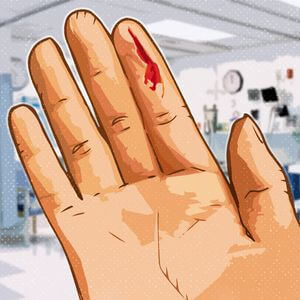Streptococcus pyogenes

A pearl necklace
Streptococcus pyogenes is the primary cause of bacterial angina. These are small shells colored in purple with the Gram stain (Gram positive) which are generally found visualized in the form of chains (resembling a string of pearls). This arrangement is linked to the multiplication of streptococci relatively quickly and on a median symmetry.
Streptococci are able to grow both in the presence and in the absence of oxygen. They grow particularly well on blood agars where Streptococcus pyogenes will cause total hemolysis called beta hemolysis. Thus in laboratories, detection of streptococcus pyogenes is sometimes done by culture on blood agars and when total hemolysis is present, typing is carried out using beads coated with antibodies specific for this species.
This classification approach allows the grouping of streptococci pyogenic in group “A”. Thus, one of the synonyms for this species is “group A beta hemolytic streptococcus”. Even if most often the streptococcus pyogenes will cause bacterial tonsillitis (the first cause of bacterial angina), it can also happen that the streptococcus pyogenes causes severe disseminated infections (sepsis1) or causes skin infections (dermohypoderma2, for example).


There are many other species of streptococci including nice streptococci present in our oral flora (Streptococcus salivarius, for example) as well as a particularly dangerous streptococcus, the first frequent agent of pneumonia, Streptococcus pneumoniae.
